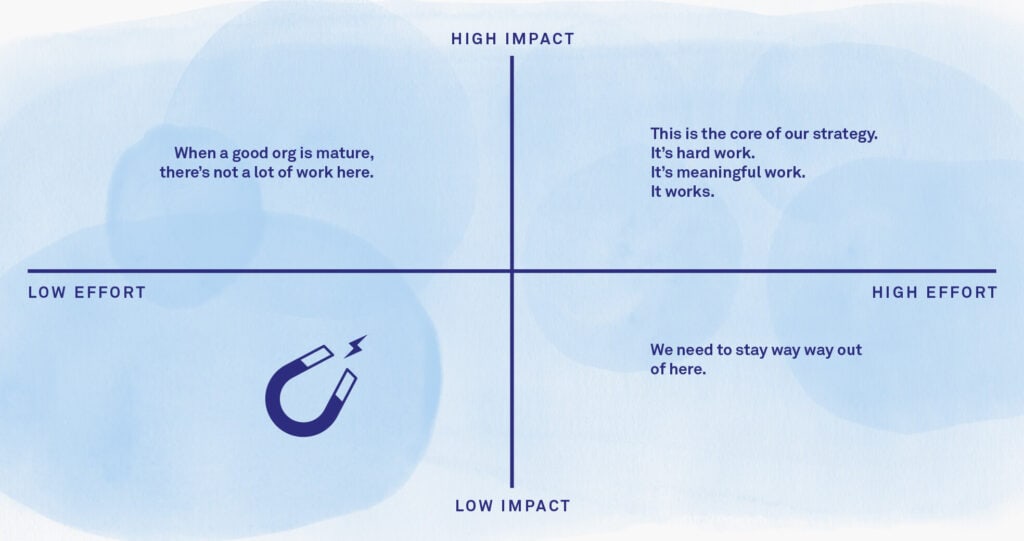In this comprehensive guide, I’ll dive deep into the importance of properly analysing customer feedback and show you how to turn valuable insights into actionable improvements.
With over two decades of experience helping businesses optimize their customer experience, I’ve seen first-hand the transformative impact of effective feedback analysis. From identifying new market opportunities to reducing churn and boosting profits.
In this post, I’ll cover:
- The key advantages of analyzing customer feedback
- Essential methods and tools for effective analysis
- A step-by-step guide to implementing a feedback analysis process
- Best practices and expert tips for success
- Common pitfalls to avoid
Let’s get started on your journey to customer-centric growth and success.
- The Importance of Properly Analysing Customer Feedback
- Methods & Tools for Customer Feedback Analysis
- Step-by-Step Guide to Analysing Customer Feedback
- Step 1: Collect Feedback from Various Channels
- Step 2: Clean and Organise the Feedback Data
- Step 3: Perform Sentiment Analysis
- Step 4: Identify Themes and Patterns
- Step 5: Analyse Quantitative Metrics
- Step 6: Conduct Qualitative Analysis
- Step 7: Pinpoint Root Causes
- Step 8: Prioritise Action Items
- Step 9: Share Insights and Create Action Plans
- Step 10: Monitor Progress and Continuously Improve
- Case Studies of Customer Feedback Analysis in Action
- Best Practices & Expert Tips
- Common Pitfalls to Avoid

The Importance of Properly Analysing Customer Feedback
Actively listening to and learning from your customers allows the organisation to optimise its offerings, improve satisfaction, and drive long-term growth.
Improved Product Development
By understanding what features customers love, what they find frustrating, and what they wish your product could do, you can make data-driven decisions about where to invest your resources. This not only helps you create better products but also ensures that you’re prioritising the enhancements that matter most to your customers.
Using customer feedback one of our clients identified a whole new market segment, redeveloped their existing product and opened up a new revenue stream.
Competitive Advantage
Feedback analysis can also give you a competitive edge by tracking what customers are saying about your brand and your competitors. The information helps you identify areas where you excel and where you need to improve to stay ahead of the game.
This intelligence can inform your marketing messaging, product positioning, and overall business strategy.
Reduced Churn and Increased Profit
Identifying and addressing customer pain points through feedback analysis, can significantly reduce churn and increase revenue. By proactively tackling issues and continuously improving based on feedback, you can keep customers happy, loyal, and spending more with your brand over time.
The link between retention and profit is tight: a study by Bain & Company found that increasing customer retention rates by just 5% can increase profits by 25% to 95%.

Reduced Costs
Often overlooked is the impact customer feedback analysis and action has on business and servicing costs.
B2B financial services company AccessPay found that by analysing and taking action on customer feedback they were able to reduce staffing costs, customer calls, hiring and training costs, and more.
Methods & Tools for Customer Feedback Analysis
To effectively analyse customer feedback, you need the right methods and tools. These range from manual techniques to cutting-edge technologies powered by artificial intelligence (AI) and machine learning (ML). Let’s explore some of the most common and effective approaches.
Manual Analysis
While it can be time-consuming, manual analysis is still a valuable method, especially for smaller datasets, high value B2B customer relationships or when you need to dive deep into specific feedback.
Here are some best practices:
- Categorise feedback by topic, sentiment, or other relevant criteria
- Look for patterns and recurring themes
- Identify actionable insights and prioritise based on impact and feasibility
- Share findings with relevant teams and stakeholders
Automated Analysis
For larger volumes of feedback, automated analysis can augment manual data review.
AI and ML technologies can help you process vast amounts of data quickly and accurately, uncovering insights that might be missed by human analysts.
In many ways, recent advances in AI have revolutionised the automated analysis of customer feedback data. What, even 2 years ago, was the purview of high priced software and specialist analysts can be now be performed by most company data analysts
Some popular techniques include:
- Sentiment Analysis: Automatically determine the emotional tone (positive, negative, or neutral) of feedback using natural language processing (NLP)
- Topic Modelling: Identify key themes and topics within feedback data, helping you understand what customers are talking about most
- Text Analytics: Extract meaningful insights from unstructured text data, such as open-ended survey responses or social media comments
Leading Tools and Platforms
Consider investing in specialised tools and platforms. These solutions offer a range of features, from data collection and organisation to advanced analytics and reporting.
Some options include:
- Clarabridge: A comprehensive customer experience management platform that uses AI-powered text and speech analytics to derive insights from feedback data
- OpenAI: this AI toolset includes tools for grouping similar ideas together, sentiment analysis and a range of powerful language manipulation. At present it leads other AI tools, e.g. Anthropic, because of the integrated nature of the tools.
- MonkeyLearn: A user-friendly platform for text analysis, with pre-built models for sentiment analysis, topic classification, and more
Step-by-Step Guide to Analysing Customer Feedback
Here’s a practical, step-by-step guide to help you get started:
Step 1: Collect Feedback from Various Channels
The first step is to gather feedback from all the channels where your customers are engaging with your brand.
This might include:
- Surveys (NPS, CSAT, CES, etc.)
- Social media mentions and comments
- Online reviews (Google, Yelp, TripAdvisor, etc.)
- Support tickets and chat logs
- Email and phone interactions
- In-person feedback (e.g., from events or store visits)
Step 2: Clean and Organise the Feedback Data
Once you’ve collected your feedback, it’s important to clean and organise the data to ensure accuracy and consistency.
This involves:
- Removing duplicates and irrelevant data points
- Standardising data formats (e.g., date, time, customer info)
- Categorising feedback by source, topic, or other relevant criteria
- Creating a centralised repository for all feedback data
Step 3: Perform Sentiment Analysis
Next, use sentiment analysis tools to determine the emotional tone of each piece of feedback. This will help you quickly identify areas of high satisfaction or frustration, and prioritise issues that need immediate attention.
In practice the sentiment of survey data is quite easy to identify as the NPS or CSAT score will clearly show the sentiment of the respondent
Step 4: Identify Themes and Patterns
Using techniques like topic modelling and keyword analysis, identify the main themes and patterns within your feedback data.
Look for:
- Recurring issues or pain points
- Common praise or satisfaction drivers
- Emerging trends or shifts in customer preferences
- Correlations between feedback and other business metrics (e.g., sales, churn)
For example, Zip Water identified First Contact Resolution (FCR) as an important driver of NPS, and thus revenue. So, they started measuring FCR and then created programs to directly improve it long term.
Step 5: Analyse Quantitative Metrics
Be sure to analyse quantitative metrics like NPS, CSAT, and CES. These will give you a high-level view of customer satisfaction and loyalty, and help you track progress over time.
Step 6: Conduct Qualitative Analysis
Dive deeper into specific feedback comments and open-ended responses to gain richer, more nuanced insights. Often, this means simply reading the customer feedback
Look for:
- Detailed descriptions of customer experiences and pain points
- Suggestions for improvements or new features
- Emotional language that reveals the intensity of sentiment
- Context and background info that can help inform your understanding
Step 7: Pinpoint Root Causes
For recurring issues or themes, use root cause analysis techniques to identify the underlying drivers. This might involve:
- Mapping customer journeys to identify friction points
- Analysing feedback in relation to other data sources (e.g., web analytics, CRM)
- Conducting follow-up surveys or interviews to gather more context
Step 8: Prioritise Action Items
Based on your analysis, prioritise the issues and opportunities that will have the greatest impact on customer satisfaction and business outcomes.
Consider factors like:
- Severity and urgency of the issue
- Number of customers affected
- Potential impact on revenue or churn
- Feasibility and cost of implementing solutions
The Impact Vs Effort chart is a useful approach to this prioritisation task. It help you to estimate the best place to invest your effort.
Step 9: Share Insights and Create Action Plans
Once you’ve identified your top priorities, share your findings with relevant teams and stakeholders.
Create clear, actionable plans for addressing each issue, with specific owners, timelines, and success metrics.
Step 10: Monitor Progress and Continuously Improve
Finally, track the progress of your initiatives and continue to gather and analyse feedback to ensure continuous improvement.
Regularly review your feedback metrics and adjust your action plans as needed based on new insights and changing customer needs.
Case Studies of Customer Feedback Analysis in Action
CyberCX Case Study: Turning NPS data into Improvement

CyberCX has successfully turned NPS feedback into improvement initiatives.
At CyberCX, NPS data is meticulously analysed and summarised, with questions raised such as whether an issue is specific to a particular region or systemic.
If systemic, the COO takes ownership to resolve it. If within a region or team, they are expected to commit to addressing it. The approach is iterative, focused on continuous improvement.
In an interesting twist, CyberCX devotes as much time looking for what is absent in the feedback as what is present.
Zip Water UK: Lifting NPS from +5 to +73

Zip Water UK dramatically lifted their in just three years by driving customer experience culture and relentlessly finding and correcting root cause issues for their customers.
Every customer comment is viewed as an opportunity to uncover and correct a problem to prevent future issues.
Zip UK hasn’t created long, complex, formal data analysis processes, but simply views every comment through a root cause analysis and corrective action lens.
This creates a powerful long-term improvement path where continual small improvements lead to significant gains over time.
Best Practices & Expert Tips
To get the most out of your customer feedback analysis efforts, consider these best practices and expert tips:
Collect Feedback at Key Moments
Timing is everything when it comes to feedback. Aim to collect feedback at key moments throughout the customer journey, such as:
- After a purchase or transaction
- Following a support interaction
- At key milestones in the customer lifecycle (e.g., onboarding, renewal)
- When a customer churns or cancels their account
This will help you gain a more comprehensive view of the customer experience and identify opportunities for improvement at each stage.
Use Clear Objectives to Guide Analysis
Before diving into analysis, define clear objectives and questions you want to answer. This might include:
- Identifying the top drivers of customer satisfaction or dissatisfaction
- Understanding how customer needs and preferences vary by segment
- Measuring the impact of specific initiatives or changes on feedback metrics
- Benchmarking performance against competitors or industry standards
Combine Quantitative and Qualitative Data
To gain a complete picture of customer sentiment and preferences, it’s important to analyse both quantitative and qualitative feedback data.
Quantitative data (e.g., NPS scores, ratings) can help you track high-level trends and benchmarks, while qualitative data (e.g., open-ended comments, reviews) provides rich, contextual insights into the “why” behind the numbers.
Ensure Data Accuracy and Quality
The accuracy and quality of your feedback data are critical to the success of your analysis. Regularly audit your data collection processes and tools to ensure that you’re capturing complete, consistent, and reliable data.
This might involve:
- Validating survey questions and response options
- Cleaning and de-duplicating data
- Checking for biases or skewed samples
- Ensuring compliance with data privacy regulations (e.g., GDPR)
Leverage AI and Automation
To scale your feedback analysis efforts and uncover deeper insights, consider leveraging AI and machine learning tools.
These technologies can help you to:
- Automatically categorise and tag feedback by topic, sentiment, and other attributes
- Identify patterns and correlations that might be missed by human analysts
- Predict future customer behaviour and preferences based on historical feedback data
- Streamline the feedback collection and analysis process, saving time and resources
Democratise Access to Insights
To truly embed customer feedback into your company culture, it’s important to democratise access to insights.
This means making feedback data and analysis easily accessible to all relevant teams and stakeholders, from the C-suite to the front lines.
Consider:
- Creating dashboards and visualisations that make feedback metrics easy to understand and act on
- Integrating feedback data with other business intelligence and analytics tools
- Providing regular training and education on how to use and interpret feedback insights
- Celebrating and rewarding teams and individuals who leverage feedback to drive positive change
Close the Loop with Customers
Finally, don’t forget to close the loop with customers who provide feedback.
This means:
- Acknowledging their feedback and thanking them for their input
- Communicating any changes or improvements made as a result of their feedback
- Following up to ensure that their issue has been resolved or their suggestion has been considered
- Proactively seeking their input on future initiatives or product development
Common Pitfalls to Avoid
While customer feedback analysis can be a powerful tool for driving business success, there are several common pitfalls that organisations should be aware of and avoid:
Focusing Only on Scores, Not the “Why”
One of the biggest mistakes companies make is focusing too heavily on quantitative feedback metrics (e.g., NPS, CSAT scores) without digging deeper into the qualitative insights behind them.
While these scores can be useful for tracking high-level trends, they don’t provide the rich, contextual information needed to understand the root causes of customer sentiment and drive meaningful improvements.
Use scores as a starting point, but always dive deeper into customer comments, reviews, and other forms of unstructured feedback to uncover the “why” behind the numbers.
And never use scores as goals for front line employees not only is it demotivating for the staff but it also drive the wrong behaviour, including score begging.
Failing to Act on Customer Insights
Another common pitfall is collecting and analysing feedback data but failing to act on the insights it provides.
This can happen for a variety of reasons, such as:
- Lack of buy-in or resources from leadership
- Siloed teams and lack of cross-functional collaboration
- Unclear ownership and accountability for acting on feedback
- Analysis paralysis or fear of making the wrong decision
To avoid this pitfall, establish clear processes and ownership for turning feedback insights into action.
This might involve:
- Assigning dedicated CX or customer insights teams to lead feedback analysis and action planning
- Setting specific, measurable goals and KPIs for feedback-driven improvements
- Regularly reviewing progress and holding teams accountable for results
- Celebrating and rewarding successful initiatives that drive positive change
Lacking a Clear Feedback Strategy
A third pitfall is collecting and analysing feedback without a clear strategy or purpose. This can lead to a scattershot approach where feedback is collected haphazardly, analyses in isolation, and fails to drive meaningful business impact.
To avoid this pitfall, develop a clear, holistic CX strategy that includes specific goals and metrics for feedback collection, analysis, and action.
This might involve:
- Identifying key customer segments and journeys to focus on
- Defining specific feedback metrics and targets for each stage of the customer lifecycle
- Aligning feedback initiatives with broader business objectives and priorities
- Regularly reviewing and updating your feedback strategy based on new insights and changing customer needs












